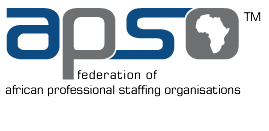In three of the last four training programs we’ve run, someone has asked: “Is it OK to start the interview by asking the candidate to just tell me a bit about themselves or to give me a high-level run-through of their resume?”
Each individual had their own reason for starting interviews this way, but the gist was “it’s a nice way to get a high-level picture of the person and get the conversation flowing.”
I would advise strongly against this approach. Those first few minutes of the interview are critical — this is when the candidate is trying to figure out what kind of a conversation this will be and how they should behave.
When you start by asking the candidate to give you a little extemporaneous speech about themselves, they (naturally) assume this is what you expect from them throughout the interview — a bunch of monologues.
And, to be clear, that is not what you want. You are seeking an interactive dialogue in which you are asking follow-up questions frequently, to help steer to the data you need to get out of each story.
Instead of asking for the stump speech, I would recommend starting by setting fairly clear expectations about how you’d like to use the time. Specifically, tell the candidate you have a set of questions to ask them and the general theme of those questions. For example, you might start by saying, “I’ve prepared some questions for you and they generally involve the theme of team leadership” (or processes, or customer relationships, or metrics, or career transitions, etc.).
Don’t broadcast the specific results, skills, or competencies you are testing, but feel free to let them know the theme of the questions. And, of course, use this opportunity to let them know that you’ll leave plenty of time for their questions (about the company, the role, etc.) at the end.
This approach to setting the agenda makes it way more natural and comfortable to just get straight into the content.
Once you have set the agenda, what should be the first “real” question on the list? I would choose a very simple, open-ended, nonleading question about a recent role. For our team leadership example above, consider something like, “To start with, I’d love to learn about the team you inherited at [company X]. What was that team like when you joined?”
And here’s the next critical point: As soon as they start answering your first question, make sure you stay enthusiastic, curious, and engaged. Nod and vocalize frequently. Jump in with lots of follow-ups. This essentially “trains” the candidate to expect a very involved and curious conversation partner.
Keep in mind that your warmth and curiosity are far more important than having the most artfully phrased first question. Don’t overthink that first question — just make sure it gets you to relevant content, and don’t pack it with too many filters or qualifiers.
This post was originally published on LinkedIn.
Jordan Burton has 18 years of experience as an executive assessor and interviewing trainer, working with top VC/PE investors and high-growth startups to help them hire the best of the best. He has trained thousands of founders, leaders, and investors on hiring and interviewing skills. He leads Talgo’s business development initiatives, managing relationships with TPG, Sequoia Capital, TH Lee, Palantir, Scale AI, and over 50 venture-backed startups.
...
Originally Posted on LinkedIn





